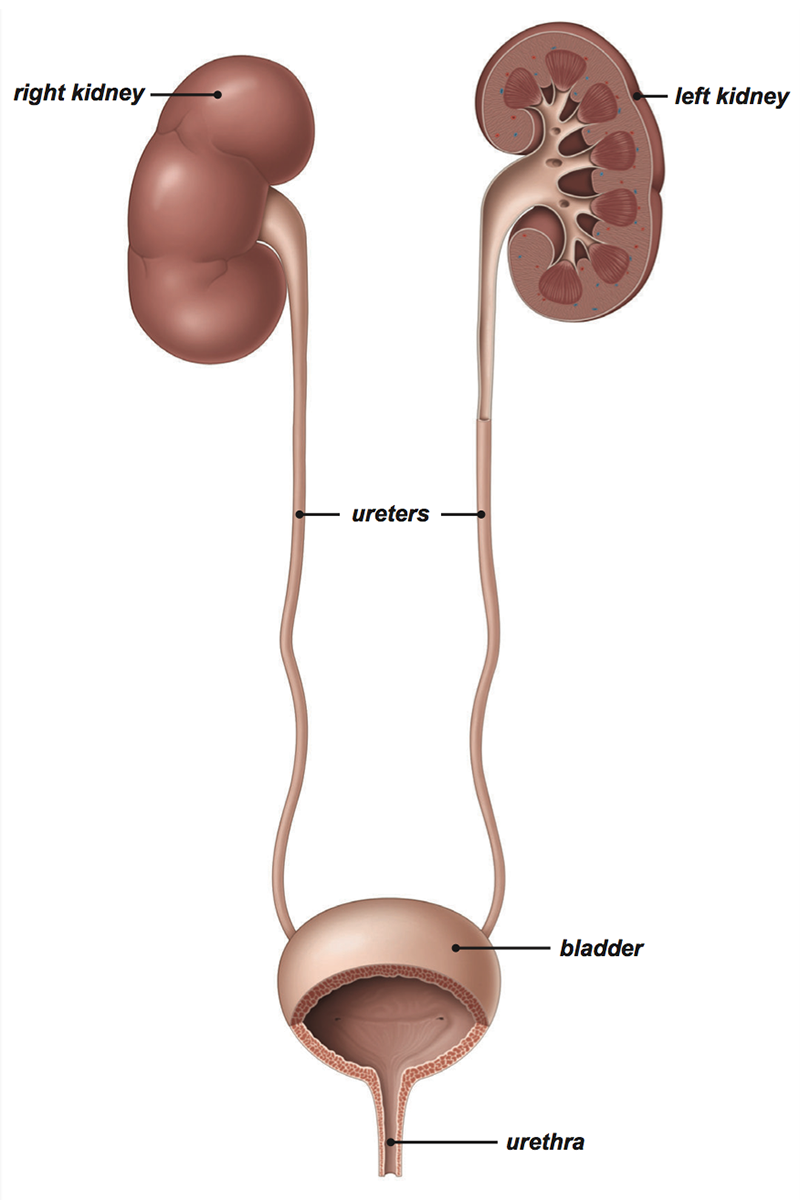
There are usually two kidneys although some patients have only one. The kidneys are located in the upper abdomen, closer to the back than the front. They lie just in front of the back muscles and behind the intestines. The kidneys are solid organs surrounded by a layer of fat. The central part of the kidney is hollow – this is called the renal pelvis and is where the urine is stored just prior to flowing downstream into the ureter.
In some patients the kidneys are located in the pelvis (pelvic kidney) or the two kidneys are joined together across the midline (horseshoe kidney).
Each kidney produces urine which drains down a ureter into the base of the bladder. Some patients have two ureters draining out of one kidney – a duplex system. Very rarely patients have three ureters draining a kidney. The ureters are very narrow which is not a problem as urine can easily flow though this. However, the narrow diameter of the ureter is a major problem for patients who have stones in the kidney as these frequently get stuck in the ureter causing a blockage.
The two ureters drain into the bladder. The bladder is an organ designed to store urine until such time as it is convenient to empty the bladder. The bladder is located deep in the pelvis just behind the pubic bone. It has a capacity of 400-700 ml in most people although this is extremely variable.
The bladder drains out of the body through the urethra, also known as the water pipe. The urethra is short in women and long in men. The urethra is much wider than the ureters and kidney stones usually do not get stuck in the urethra. Nearly all stones which manage to pass through the ureter into the bladder will pass from the bladder without further difficulty or pain.
The prostate is an organ found only in men. It encircles the urethra just under the bladder and is involved in making semen. The prostate may, if is enlarged, cause a blockage to the urethra.










